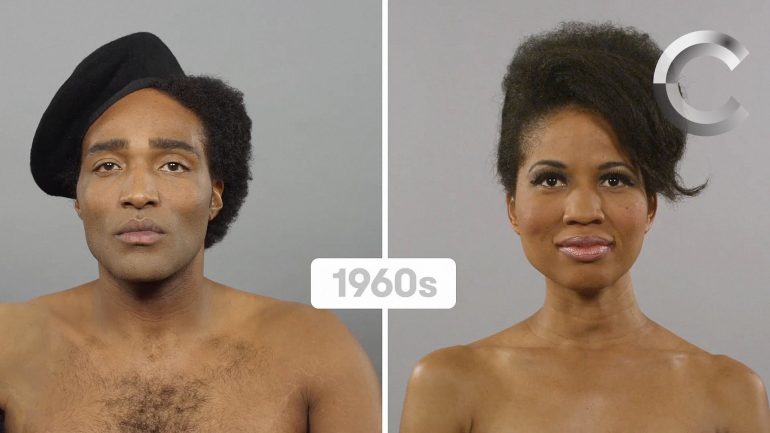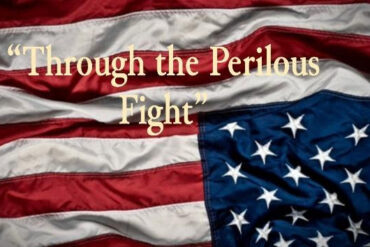Throughout history, fashion has been a symbol of identity within the African American community. Fashion had a role as a pacifier, helping to bring people in the community together and soon enough, even without the aid of speech, it could act as a statement. Within the African American society circles, from general cloth to religious churches to the proud, life-changing politcal movements, many historical elements inspired the ever-changing style.
Women’s fashion of the nifty 50’s continously changed throughout the decade, and for the African American woman this was truly the case. After all, ladies of the time flowed with the times. They picked out styles that worked in their favour, based on the in-trend designs at the time, and always threw in their own personal touch.
With the influence of Parisian fashion, full hooped skirts that came to the knee were a popular choice and matched with a fitted dress bodice accentuating the waist were common. Also, around this time, women worldwide, including African American women, were strong advocates for women’s rights and thus started to assert their own sense of independence in the workforce. This subsequently led to business suits for women to increase in popularity. Simple blouses tucked into a fitted pencil skirt with a tailored jacket, either fitted at the waist or boxy and cropped on top. For those really wanting that extra touch of professionalism, African American women loved opting for a stylish hat.

The swinging 60’s was definitely an eventful period. It was filled to the rim with highly historical cultural shifts, rebellions that led to liberation, and in all, a new generation of expression.
Times were on the move and the use of fashion by the Civil Rights and Black Power Movements was used as an influential visual in changing the point of view, consciousness and pride within the African American community. This led to the style during this decade to be a reflection of strength, self-identity and pride. With an increased consciousness regarding black culture, African American women took pride in their rich history and the Afro took its place as a universal symbol of black identity and acted as a weapon of rebellion against the years of oppression which often led to their ‘softening’ of their black appearance through the use of harsh chemicals and straighteners. In addition, with their increased confidence in their culture, African-American women began sporting brightly colored clothing specially made from traditional African materials such as Kente. These loose-fitting garments made of Kente cloth made popular by high profile figures such as Muhammad Ali was influential in the world of fashion, not just within the African American community, but appeared in mainstream fashion magazines worldwide. Throughout the 1960’s, the adoption of blue jeans, loose baggy shirts and brightly colored beads as body adornments that gave praise to traditional African cultures were on a high.
Clothes are always the first thing that people see. It can truly speak volumes without even saying a word.
Full of free love, peace signs and a highly relaxed decade ultimately led to a great change to the African American fashion in the feel good 70’s. Loud, obnoxious and trends that would have sent the previous decade into a frenzy, the African American ladies strongly embraced the presence of the daring global fashion changes that came along.
Throughout America, the black women loved getting themselves into extreme fashion trends such as animal prints and fur, which were used as a symbol of elegance, class and wealth. Other trends of the decade were heavily influenced by the emergence of the hippies and with high profile figures such as Jimi Hendrix, bell-bottoms, bandleader jackets and fringes on bags, vests and jackets become an attention-worthy phenomenon.
There was no doubt that just as fitness home videos hit the market during the 80’s, aerobics fashion was in. From the leotards to the knee-high socks to athletic crop tops, these weren’t just used during exercise, but were used as a fashion statement by African American women everywhere. In addition, women’s power suits become highly in style, causing women everywhere to sporting shoulder pads and jackets cropped at the waist. Bright neon colors and daring patterns were highly embraced. After all, the motto of the decade was the stronger the better. During the 1980’s, NBC’s The Cosby Show redefined what it meant to be black in America by introducing everyone to some redefining sweaters and never-seen-before flattop hairdo’s.
Hand-in-hand, the 90’s was truly the decade of the African American supermodels. With the rise of black models such as Naomi Campbell and Tyra Banks, these superstars helped redefine mainstream fashion in America causing oversized shirts, thigh high socks, form fitting, belly button showing crop tops and plaid were embraced by African American women everywhere. In addition, poetic justice braids were made popular by highly prolific figurines such as Janet Jackson and has been recently brought back to style by present-day celebrities such as Solange Knowles. However, many fashion statements highly sought-after by black women were also taken from the European ladies, such as the platform sneakers which were made popular by the Spice Girls.
Clothes are always the first thing that people see. It can truly speak volumes without even saying a word. One single item can become historic, powerful and representative for an entire movement. It can be the trigger for a revolution and now, in the age of modern technology, images hold a lot more weight and can be truly powerful. So throughout history, we can witness exactly how fashion can be extremely critical within the African-American community and how it reflects both their lives and their story.








Very helpful and Great information,
we appreciate advise especially coming from a professional.
Thanks again and keep up the great work!
+++++
Read more at http://vibrantwave.com/best-online-clothing-stores-for-women/
Glad you enjoyed the article.